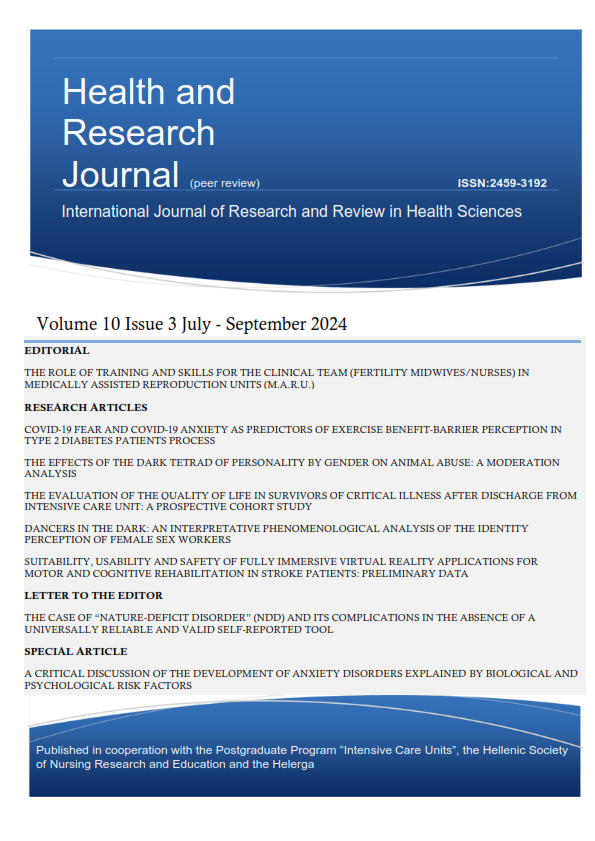The effects of the Dark Tetrad of personality by gender on animal abuse: A moderation analysis

Abstract
Background: The field of psychology has classified negative and antisocial behaviors in humans under the term "Dark Tetrad," which includes Machiavellianism, Narcissism, Psychopathy, and Sadism. Numerous studies have provided evidence of a significant association between the Dark Tetrad traits and both human maltreatment and violent behaviors. Among these violent behaviors, animal abuse is a prevalent form that has been shown to predict other types of abuse. The present study aims to investigate the connection between the Dark Tetrad traits and animal abuse, while also examining the potential moderating effect of gender.
Method: A total of 243 participants, consisting of 106 men (43.6%) and 137 women (56.4%) and ranging in age from 18 to 55, Greeks living in Greece, were recruited for this study. Data collection was conducted online, where participants provided their demographic information and completed two scales: the Dark Tetrad scale and the animal abuse scale.
Results: The findings of the study revealed a significant association between all Dark Tetrad traits and animal abuse, which supports previous research. Furthermore, the analysis showcased a moderating influence of gender, whereby the three Dark Tetrad traits (Narcissism, Psychopathy, Sadism) exhibited a stronger predictive effect on animal abuse for men compared to women.
Conclusion: The study concludes that all Dark Tetrad traits can predict animal abuse, especially in men, except Machiavellianism, which does not show significant gender differences. Future research should consider controlling the confounding effects of domestic violence and investigate the indirect impact of the Dark Tetrad traits on such behaviors.
Article Details
- How to Cite
-
Faratzi, A., Konstantinos Christos Daoultzis, Georgios Pilafas, & Peny Louka. (2024). The effects of the Dark Tetrad of personality by gender on animal abuse: A moderation analysis. Health & Research Journal, 10(3), 157–171. https://doi.org/10.12681/healthresj.34837
- Section
- Original Articles
Copyright notice:
The journal "Health and Research Journal" reserves the rights for copyright of the content of the website and also the copyright of the articles published.
By virtue of their appearance in this journal, the articles are free to be used for non-commercial purposes. However, the articles cannot and must not be used in anyway, published elsewhere or modified without any reference to the author and the first publication of the article.


